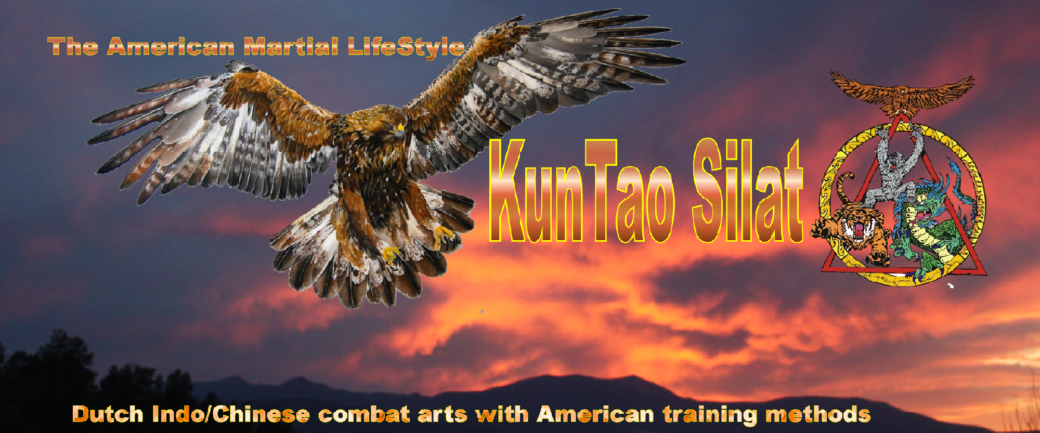Depending on your background and life experience, the following statement may or may not make sense to you: fighting and self-defense are NOT the same thing.
Now, let’s clear some semantics up: by “fighting” I am referring to a mutual physical conflict between two or more participants. “Self-defense” in this essay refers to the protection of oneself against assault from an outside party or parties (notice this does not automatically imply “getting physical.”)
”Fighting” implies that all persons involved are actively trying to win, and have chosen to participate in the conflict. “Self-defense” involves an aggressor(s) and a defender, with the later attempting self preservation by avoidance, escape, or counter assault.
While there can of course be crossover in the physicality required to succeed in either event, the fundamental mindset and context could not be more different.
Many of the martial arts teach their techniques in a fighting context, where two or more individuals square off to determine who is superior. Essentially, this is a duel. And while the physical and mental attributes needed to prevail are admirable and desirable to achieve, it is important to remember that a duel is still a voluntary experience. Whether it is a bar fight, a locker room brawl, or a martial arts tournament, two or more individuals squaring off to establish a dominant and subservient pecking order is not the same as a self-defense scenario where at least one participant is involuntary and the other(s) is actively seeking to victimize the defender.
This discrepancy between scenarios, in my opinion and experience, is THE major source of friction (i.e. internet trash talk) between players of different martial arts. It is very easy to forget that of the myriad styles available to us now, many are leftovers from periods of warfare and/or civil strife where the context behind the system is that someone is trying to ambush and kill you. These systems are geared towards counter assault, meaning that the curriculum is based on the assumption that an individual(s) of superior physicality, numbers, and arms is attempting to victimize the defender, who has to “flip the script” and survive by any means. As an attacker could have any sort of weapon or technical apogee, preparation involves isolating a set of techniques based on universal principles (body mechanics, strategy, tactics) that have the widest possible application and learning to use them against the most statistically common attacks or methods known to that time and culture. As a result, an emphasis on simplicity and brutality is common across “old” arts.
Other (usually newer) arts, such as the modern combat sports, descend from dueling arts where two or more players would square off to “test” their mettle. This was an effective way for professionals to maintain their prowess in times of relative peace. In the pre-modern era these dueling arts produced deadly fighters at the cost of life and limb. Nowadays their descendant styles allow for a tap out or referee stoppage, but the live fire format allows for the development of excellent and well practiced skill.
However, the dueling format establishes a scenario with a number of underlying assumptions that are inconsistent with criminal assault or military ambush. For example, all parties involved KNOW that an altercation is going to happen. Everyone has their weapons ready, or if unarmed, has assumed their preferred fighting position at the onset. Particularly in combat sports, the sparring format’s rules exist to permit that system’s techniques to be most advantageous and therefore emphasized. Moreover, the techniques often assume that the opponent is similarly trained, so preparation becomes geared towards overcoming a similar skill set. This results in highly skilled, well conditioned players who possess an advanced apogee but tend to be more specialized.
As we can see, there are obvious merits to both approaches, and both are necessarily different as they are really about two dissimilar scenarios. Unfortunately, human nature dictates that the ego attaches a great deal of personal identity into whichever martial art we practice, and when challenged by a different viewpoint or method, rather than take the time to appreciate how context necessitated variations, people instead begin to argue.
In KunTao Silat we are very lucky that the tradition passed onto us has benefited from the sacrifices of innumerable individuals from both of these approaches, not the least of whom is Pak Steve himself. Lest we forget, Pak Steve has both competitive and “real world” experiences, and the training methods he advocates for us is born of these lessons.
The techniques and fundamental principles of KunTao Silat reflect its origins in times of great collective violence, as evidenced by the overwhelming technical and physical force brought to bear against any opponent, resulting in much of our partner technique drilling taking on a “counter assault” format. However, the historical dueling floor of the Kendang as well as Pak Steve’s experience as “enforcer” to challengers who came through the doors in the early days of KunTao Silat in America confirmed the efficacy of KunTao Silat against other styles and their players. Sticky Hands and Free Play Sparring allow the practitioner the essential benefits born of pressure testing while still allowing for the “fight ending” mechanisms of the curriculum to be applied in a safe manner against resistance.
The key is to recognize why you are practicing martial arts and to focus your training approach accordingly.
Dr. Jon
Discover more from KunTao Silat
Subscribe to get the latest posts sent to your email.

No comments yet.